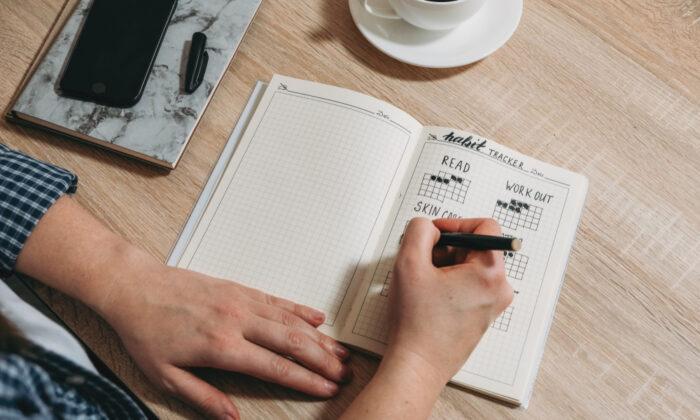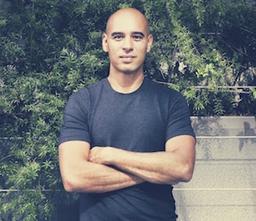The habits we just can’t seem to quit can be very challenging — not only are they hard to change, they can have negative effects on our lives, and make us feel bad about ourselves.
In this post, I’d like to talk about a few things I’ve found helpful to curb a compulsive habit.
I should make it clear that I’m not talking about full-on addictions, which I’m not qualified to help with, but things that feel compulsive. Shopping, social media, porn, smoking, eating cookies, biting your nails. Some of these can be taken to a level of full-on addictions, but mostly their at a lower level that are just really hard to stop.
Why We Have Compulsive Habits
We’re not idiots — we don’t do unhelpful things with the intent to harm ourselves, for the most part. We do them because the unhelpful habit is meeting some need.- I’m bored and want a dopamine hit
- I feel bad about myself and want to do something pleasurable to take my mind off it
- I feel awkward in social situations and need a distraction
- I’m stressed and need a coping mechanism
This is important to understand, because if you just stop doing the compulsive habit, you have removed your coping mechanism without finding another way to meet your need.
Remove Judgment, Add Compassion
We’re usually pretty judgmental about our compulsive habits. It’s a part of ourselves that we hate, or a confirmation that we’re somehow bad or inadequate.This kind of harsh judgment is a defense mechanism meant to help us get better. If we’re harsh on ourselves for “bad” behavior, maybe we’ll get our act in order, right? Well, there’s mountains of research that shows this doesn’t work. Beating ourselves up only makes us crave our compulsive coping mechanisms, because now we feel bad about ourselves and are stressed out.
What I’ve found to work far better is compassion for myself. I’m stressed about all this, why not give myself some compassion, just as I would a loved one? Why not assume I’m worthy of this kind of kindness and love, and help myself through the stress?
Persistent, Patient Commitment
Ask yourself if you really want to commit yourself fully to this. Sleep on it, and ask yourself again, before you half commit. Do you really want to change this habit? It will come with difficulty, falling on your face, and a new way of seeing yourself. Is this something you want?If the answer is absolutely yes… then commit yourself fully. Be all in. Set a Quit Date for 3 days from now.
Tell others about your commitment and ask them to hold you accountable. Promise to report to them every day or every week. Be as committed to this as you’ve been to anything in your life — your marriage, your kids, your job, your best friend.
Change Your Environment
On your Quit Date, take action to cut off easy access to your compulsive habit — throw out the cigarettes or cookies, have a friend change the password to your favorite shopping sites, use a site blocker that you don’t have the ability to change, delete the apps from your phone.Change your environment, so that you aren’t likely to do the old habit. Ask people who live and work with you to hold you accountable. I’ve told my kids they can smack me if they see me eat cookies, and they gleefully agree! I’ve asked people to hide the router until I finish writing a book chapter. I’ve gone to a coffee shop to write a book and told my family I wouldn’t come home until it’s done.
Don’t Do It Alone
When we seek to change a habit that we think is embarrassing, we usually try to do it in private, so no one can see our shamefulness. This is a mistake. Doing it alone is very, very hard, and it also reinforces the idea that we are doing something shameful, and that we should be doing this on our own.It’s stronger to do it with the help of others. Using other people’s support is just a more robust approach.
Practice Awareness & the Powerful Pause
When the compulsion to do the old habit happens, if you’re not aware of the urge, you’re likely to obey it without questioning it. It’s an imperative, without awareness.The key is to develop awareness of the urge, so that you can notice it and not think of it as an imperative, but rather just a sensation in the body, and perhaps a thought (“Just one time is OK!”). With this kind of awareness, you now have a choice, and can question whether this is what you really want.
The practice of this is to introduce a Powerful Pause before you follow the urge. If you’re about to reach for the cookies, go on Amazon to shop, or open your favorite social media apps … notice that you’re about to do that action, and pause. Just for a few moments.
This Powerful Pause now allows you to bring awareness to the action you were about to take, and the urge that’s in your body to take that action. What does the urge feel like? Can you rest your attention on it for 10 seconds? Can you notice the stress or discomfort that’s making you want to cope with it using your old habit? Can you consider whether there’s another action that could help you cope with this in a healthier way?
Don’t Stop
This is a process of retraining the mind, and it takes time. You’ll relapse, falter, fall on your face. That’s how the process goes. If you think you’re doing it wrong, just keep going. Don’t stop.The real magic happens when you fall on your face and then keep going. This is the real training. It’s when you’re in the mud and want to give up, but then you persist. It’s when you gave in to the cravings once more and are judging yourself, and then you breathe and try again.
Don’t stop. You got this.






